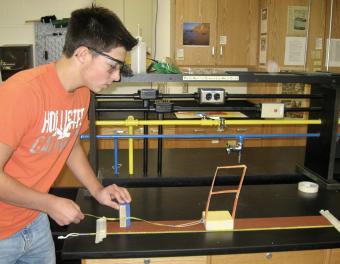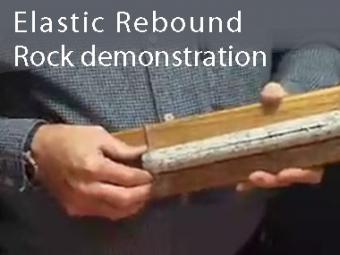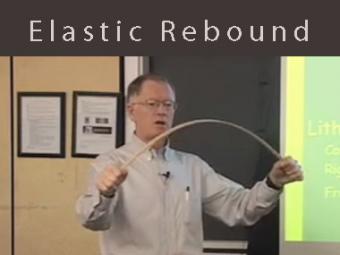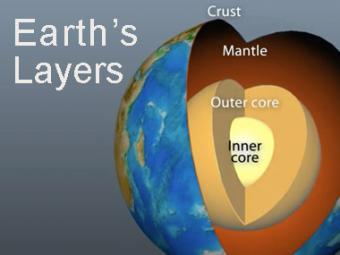The notion of rocks as elastic solids underpins many seismological concepts including the earthquake cycle and seismic wave propogation. This demonstration physically illustrates this property as students explore several rock/mineral specimens. The demonstration is somewhat discrepant because students' prior experiences suggest that rocks are hard and inflexible. Using this as a starting point, the demonstration begins with attempts to bend a large hand sample of granite or marble. Next, a large mica sample is deformed elastically. Finally, the elastic deformation of a long thin marble slab allows students to see and feel, that solid rocks are indeed elastic. During the discussion students are introduced to the concepts of stress and strain.
Theory and research supporting the development and use of this activity can be found here:
Students will be able to

Using a block-and-sandpaper model, students collaborate in small groups to investigate how energy is stored elastically in rocks and released suddenly as an earthquake (the earthquake cycle). This activity emphasizes the role of mechanical models in understanding and testing ideas in science.

This demonstration shows that rocks are elastic by squeezing a slit core of rock.

Video lecture about elastic rebound and brittle material in the crust using a yardstick as a mechanical analog. This demonstrates elasticity, brittle fracture, and why it is difficult to predict earthquakes.

The Earth has 3 main layers based on chemical composition: crust, mantle, and core. Other layers are defined by physical characteristics due to pressure and temperature changes. This animation tells how the layers were discovered, what the layers are, and a bit about how the crust differs from the tectonic (lithospheric) plates, a distinction confused by many.
We encourage the reuse and dissemination of the material on this site as long as attribution is retained. To this end the material on this site, unless otherwise noted, is offered under Creative Commons Attribution (CC BY 4.0) license